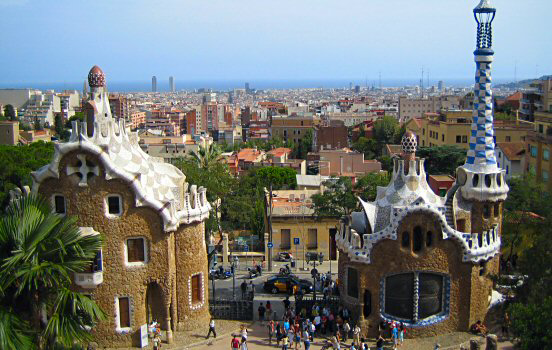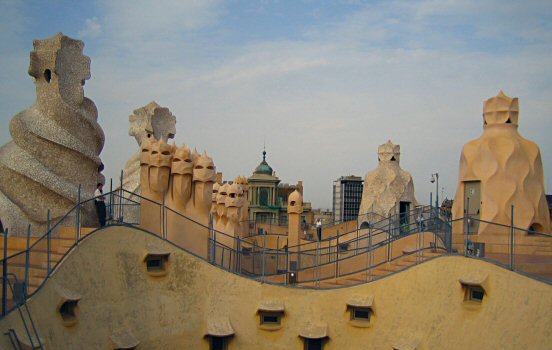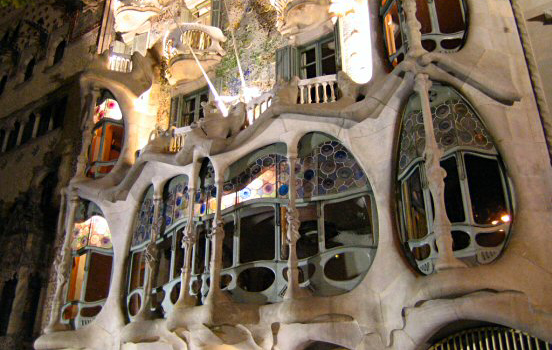If there is anyone who has placed their mark on Barcelona, it would be Antoni Gaudí. His surreal fever dreams still rise above it all. Melting stone, warped towers and twisted shapes that seem more hallucination than architecture. Gaudí didn’t just build things. He conjured them like some Catalan shaman channeling nature through a prism of cracked tiles, iron curls and impossible curves.
The masterpiece La Sagrada Família is unfinished and unrelenting, like Barcelona itself. A young Gaudí started his work on La Sagrada Família in 1883, but more than a century later, the cathedral is forever under construction. The architect himself was hit by a tram and died in 1926, and his remains are buried in the crypt below the still ongoing cathedral.
 Parc Güell entrance.
Parc Güell entrance.
Parc Güell is an architectural wonderland of strange designs. At the entrance I pass the gingerbread houses and a water-sprouting salamander before ascending the stairs and ending up at the terrace, where a long bench is surrounding the viewpoint like a colorful snake stretching out in the sun.
It seems that Gaudí had careful thoughts far beyond the visuals. The terrace is covered by gravel instead of plates, which makes the rain water drain to a tank, connected to the mouth of the salamander below. The park has small houses here and there, constructed in local material to better blend in.
 The chimneys of La Pedrera.
The chimneys of La Pedrera.
He also enhanced several buildings downtown. The most famous is the Casa Milà, also known as La Pedrera (stone quarry). The building in itself is inspiring with wave-shaped walls and ornate balconies of wrought metal, but the real draw is the roof. The chimneys are reminiscent of the storm trooper helmets from Star Wars and according to legend George Lucas got inspiration from this balcony on his visit in the 1970s.
Casa Batlló is another house where the strange mind of Gaudí had free reigns. The facade balconies are resembling fish skeletons and the roof is decorated with plates that looks like dragon scales. The plates are made of colorful trencadis, a Catalan type of mosaic. The interior is playful and the elevator passes through various shades of blue, to resemble a deep sea dive.
 Casa Batlló facade.
Casa Batlló facade.
Centuries will pass. The cranes will rise and fall. Tourists will come and go, selfie sticks in hand. But the ghost of Gaudí will still be here. Watching, smirking and building.

Comments
No comments yet.
Leave a reply